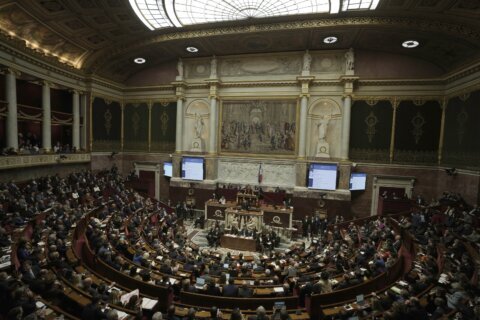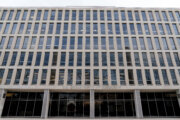TEHRAN, Iran (AP) — Iran’s newly-elected president reappointed a U.S.-educated official who came under United Nations sanctions 16 years ago as head of the country’s nuclear department, state TV reported Saturday.
Mohammad Eslami, 67, will continue his work as chief of Iran’s civilian nuclear program and serve as one of several vice presidents. Eslami’s reappointment by President Masoud Pezeshkian comes as Iran remains under heavy sanctions by the West following the collapse of the 2015 deal that curbed Iran’s nuclear activities in exchange for sanctions relief.
Pezeshkian had said during his presidential campaign that he would try to revive the nuclear deal.
The United Nations sanctioned Eslami in 2008 for “being engaged in, directly associated with or providing support for Iran’s proliferation of sensitive nuclear activities or for the development of nuclear weapon delivery systems”, when he was the head of Iran’s Defense Industries Training and Research Institute.
He was appointed as the chief of Iran’s nuclear department for the first time by late President Ebrahim Raisi in 2021, before that, from 2018, in moderate former President Hassan Rouhani’s era, Eslami served as Transport and Urban Development Minister.
He has experience working in Iran’s military industries, for years, most recently as deputy defense minister responsible for research and industry.
Eslami holds degrees in civil engineering from Detroit University of Michigan and the University of Toledo, Ohio.
The U.S., France, Britain and Germany accused Iran of escalating its nuclear activities far beyond limits it agreed to in the 2015 deal and of failing to cooperate with the U.N. nuclear watchdog, the International Atomic Energy Agency.
Iran accused the U.S. and its allies of continuing to apply economic sanctions that were supposed to be lifted under the deal, and insisted its nuclear program is peaceful and geared towards generating electricity and producing radioisotopes to treat cancer patients and remains under constant oversight by the IAEA.
Iran is building two nuclear power facilities to supplement its sole operational 1,000-megawatt reactor at the southern port town of Bushehr, which went online with Russia’s help in 2011. Under its long-term energy plan, Iran aims to reach 20,000-megawatt nuclear electric capacity.
The nation has in recent months faced country-wide power outages.
Copyright © 2025 The Associated Press. All rights reserved. This material may not be published, broadcast, written or redistributed.





